
Arizona lupine
Lupinus arizonicus
Drought tolerant, leguminous native annual with deep blue or purplish flowers, blooming January to May. Occurs on disturbed sandy washes, roadsides or open desert; up to 4,000 ft. elevation. May “super bloom” following a wet desert winter. Seeds are eaten by various birds. Important pollen source for bees and other pollinators.
- Growing Region: Intermountain West
- Blooms: Spring
- Life Form: Forb, Legume
- Application Type: Habitat Restoration, Land Reclamation
- Height: 1-4 ft
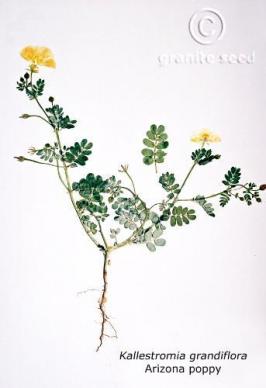
Arizona poppy
Kallstroemia grandiflora
Sprawling summer native annual with golden orange-yellow flowers, blooming July to October after desert monsoons. Quick germination when moisture is available. Found along roadsides, sandy washes, mesas, disturbed areas and low spots, often in mass communities; up to 6,500 ft. elevation. Use in desert restoration and native gardens. Prolific seed producer; seeds eaten by birds. Visited by numerous bees, wasps, flies and butterflies.
- Growing Region: Pacific Northwest, Southwest, Intermountain West, Midwest
- Blooms: Summer, Fall
- Life Form: Forb
- Application Type: Habitat Restoration, Land Reclamation
- Height: 1-3 ft
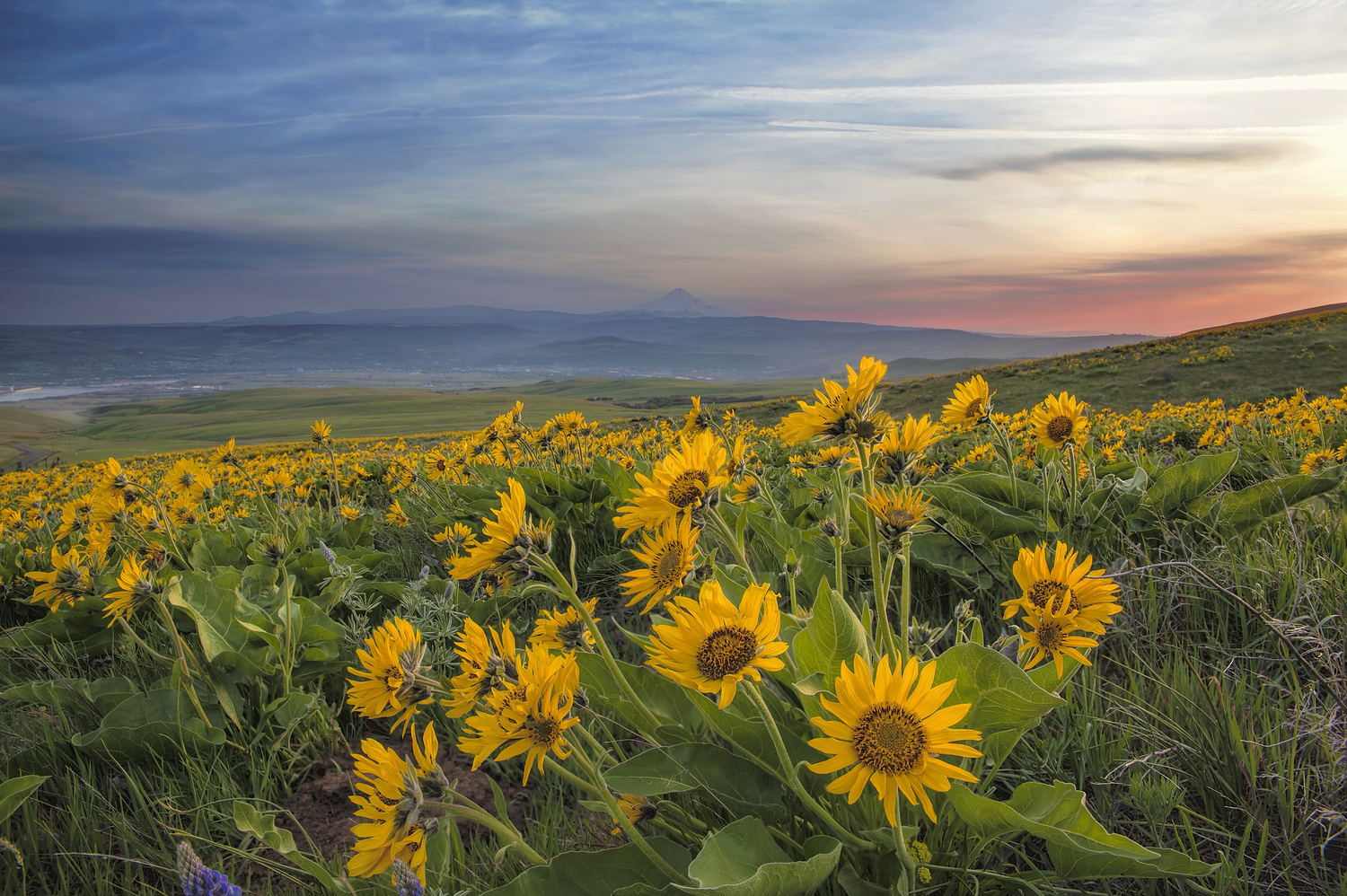
Arrowleaf balsamroot
Balsamorhiza sagittata
Drought tolerant, long-lived perennial native with yellow sunflower-like flowers, blooming April to July. Deep, thick taproot tolerant of fire, grazing, trampling and drought; seedlings slow to establish. Prefers deep, fine to medium textured well-drained soils. Often found in large patches. Common in sagebrush communities as well as mountain shrub communities, woodlands and open forests; up to 10,000 ft. elevation. Thought to have potential for use in oil shale and mining reclamation. Valuable spring and summer forage for mule deer, elk, bighorn sheep and pronghorn. Attractive to native pollinators. Sage-grouse eat the young shoots and flower buds.
- Growing Region: Pacific Northwest, Intermountain West
- Blooms: Spring, Summer
- Life Form: Forb
- Application Type: Habitat Restoration, Land Reclamation
- Height: 1-3 ft
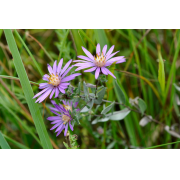
Aster, Silky
Symphyotrichum sericeum
Silky Aster is native to the United States from Texas to North Dakota and west to the Great Lakes. Given its name from the silky hairs that cover its leaves, this perennial will grow to a height of 1-3 feet. Occupying dry, upland sites and open woodlands, it is very drought tolerant preferring to grow in full sun. The purple and yellow flowers are in bloom from August-October when it is frequented by many insects and pollinators.
- Growing Region: Midwest, Intermountain West
- Blooms: Summer, Fall
- Life Form: Forb
- Application Type: Habitat Restoration, Land Reclamation
- Height: 1-2 ft

Aster, Upland White
Solidago ptarmicoides
Also known as Upland White Goldenrod as per its reclassification as solidago ptarmicoides, this plant is found scattered across much of the central and eastern portions of North America. Its white, aster like flower can be found in bloom from August- September before giving way to small clusters of seeds. The foliage resembles that of goldenrod and can be difficult to distinguish prior to flowering. This perennial prefers dry, well drained soils and full sunlight which it receives in the upland habitats that it occupies. Relatively short in growing height, 1-2 feet, it can be utilized in native landscaping and butterfly gardens where shorter plants are needed.
- Growing Region: Midwest, Intermountain West
- Blooms: Summer, Fall
- Life Form: Forb
- Application Type: Habitat Restoration, Land Reclamation
- Height: 0-1 ft
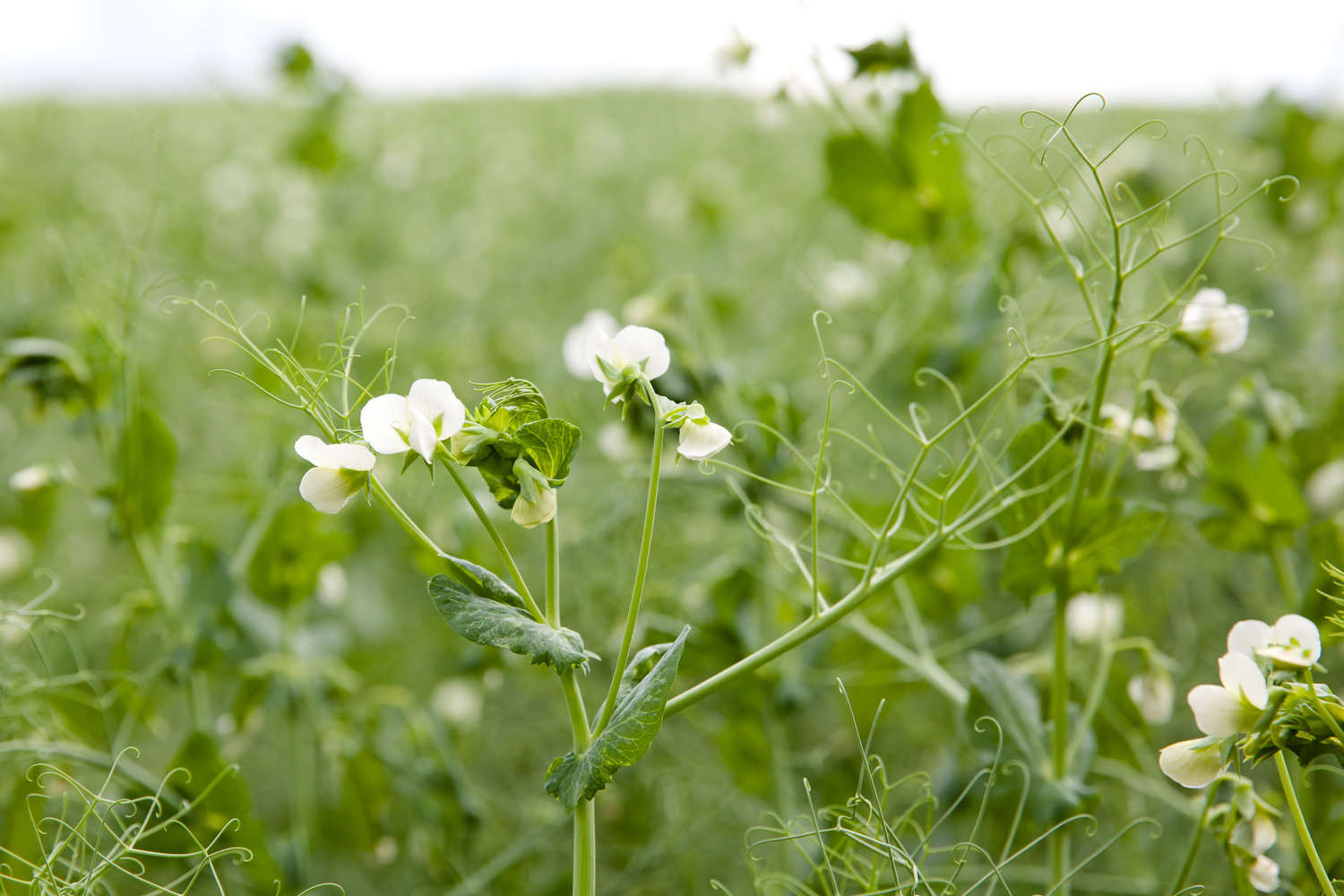
Austrian winter pea
Pisum sativum ssp. arvense
Climbing nitrogen-fixing annual legume with white to pink flowers, closely related to the garden pea. Prefers fertile, light-textured, well-drained soils; sensitive to salinity and high acidity. Water efficient and cold tolerant. Rapid and abundant forage producer with low bloat potential. Use for hay, silage, green manure or in wildlife food plots. May be grazed but easily damaged by trampling. Often seeded with cereal crops, especially Oats (Avena sativa), for climbing structure and to improve hay nutrition. May be fall-seeded, but also may be seeded in spring as a summer annual. Early and long blooming period attracts beneficial insects, honeybees and native pollinators. Some varieties are semi-leafless, with vining tendrils that replace leaflets and aid in upright growth and improved harvest.
- Growing Region: Southwest, Intermountain West
- Blooms:
- Life Form: Forb
- Application Type: Agricultural Conservation, Cover Crop
- Height: 4+ ft

Basalt milkvetch
Astragalus filipes
Drought tolerant, long-lived perennial native legume with showy pale-yellow to creamy white flowers, blooming April to July. Widely distributed and abundant on western arid and semiarid sagebrush steppe and open woodland ecosystems, from northern Mexico to southern Canada, often occurring in large colonies; up to 9,000 ft. elevation. Prefers coarse to semi-coarse soils, commonly basalt derived. Some ability to develop new shoots from lateral roots. Good colonizer after fire and competes well with cheatgrass. Use for revegetation, reclamation and habitat restoration on sites with increased fire frequency. Nontoxic to livestock and wildlife. Provides food for sage-grouse during the brood-rearing stage. Excellent pollen and nectar source for pollinators, including numerous species of native bees.
- Growing Region: Southwest, Intermountain West
- Blooms:
- Life Form: Legume
- Application Type: Habitat Restoration, Land Reclamation
- Height: 1-3 ft

Basket of gold
Aurinia saxatilis
Formerly Alyssum saxatile. Introduced mat-forming perennial with golden yellow flowers bloom spring and early summer. Low to moderate water use. Use as a groundcover in borders, rock gardens and wildflower mixtures. Attractive to bees, butterflies and birds.
- Growing Region: Midwest, Intermountain West
- Blooms: Spring
- Life Form: Forb
- Application Type: Commercial Beautification, Land Reclamation
- Height: 0-1 ft
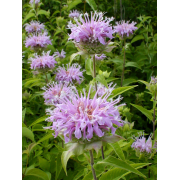
Beebalm, Plains
Monarda pectinata
Native to the western United States, Plains Beebalm can be found from Texas to South Dakota and West to Oregon and California. Commonly referred to as Pony Beebalm, this annual member of the Lamiaceae family prefers to grow in full sunlight and medium, well drained soils. Reaching a height from 2-4 feet, it is topped with white/pink flowers when in bloom from May-July. This early bloom period makes it an attractive stop for many butterflies and bees. Shallow fall seeding after last frost date will allow for natural stratification and can provide good germination in the spring.
- Growing Region: Southwest, Intermountain West
- Blooms: Spring, Summer
- Life Form: Forb
- Application Type: Habitat Restoration, Land Reclamation
- Height: 4+ ft

Bigleaf lupine
Lupinus polyphyllus
Native perennial legume with blue to purple flowers, blooming May to September. Highly variable characteristics; occasionally rhizomatous. Prefers moist sites such as wetlands, damp forests, wet meadows and streambanks but also tolerant of seasonally dry sites; up to 11,000 ft. elevation. Versatile and competitive, able to grow in acidic, nutrient-poor mineral soils. Nectar and pollen-rich flowers attract beneficial insects, hummingbirds and numerous bees.
- Growing Region: Intermountain West
- Blooms: Spring, Summer
- Life Form: Forb
- Application Type: Habitat Restoration, Land Reclamation
- Height: 1-4 ft
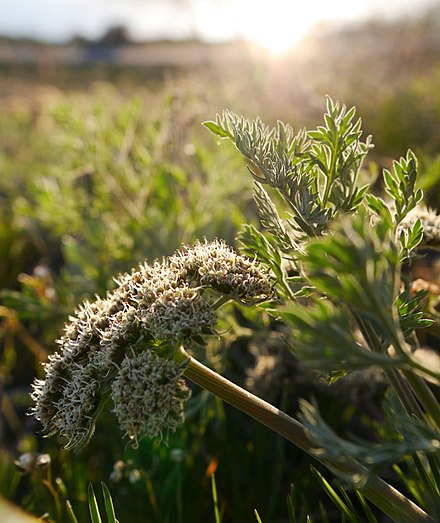
Bigseed biscuitroot
Lomatium macrocarpum
Low-growing, drought tolerant native perennial with inconspicuous white flowers, blooming early March to July. Common on rocky outcrops in foothills, grasslands, shrublands and woodland openings up to 9,000 ft. elevation. Very early spring growth, similar to Gray’s biscuitroot (L. grayi). Crucial early spring pollen for pollinators. Foliage and associated insects are vital early spring food for sage-grouse hens and chicks. Biscuitroots are host plants for the Anise swallowtail butterfly and the rare Indra swallowtail butterfly.
- Growing Region: Pacific Northwest, Intermountain West
- Blooms: Spring, Summer
- Life Form: Forb
- Application Type: Habitat Restoration, Land Reclamation
- Height: 4+ ft
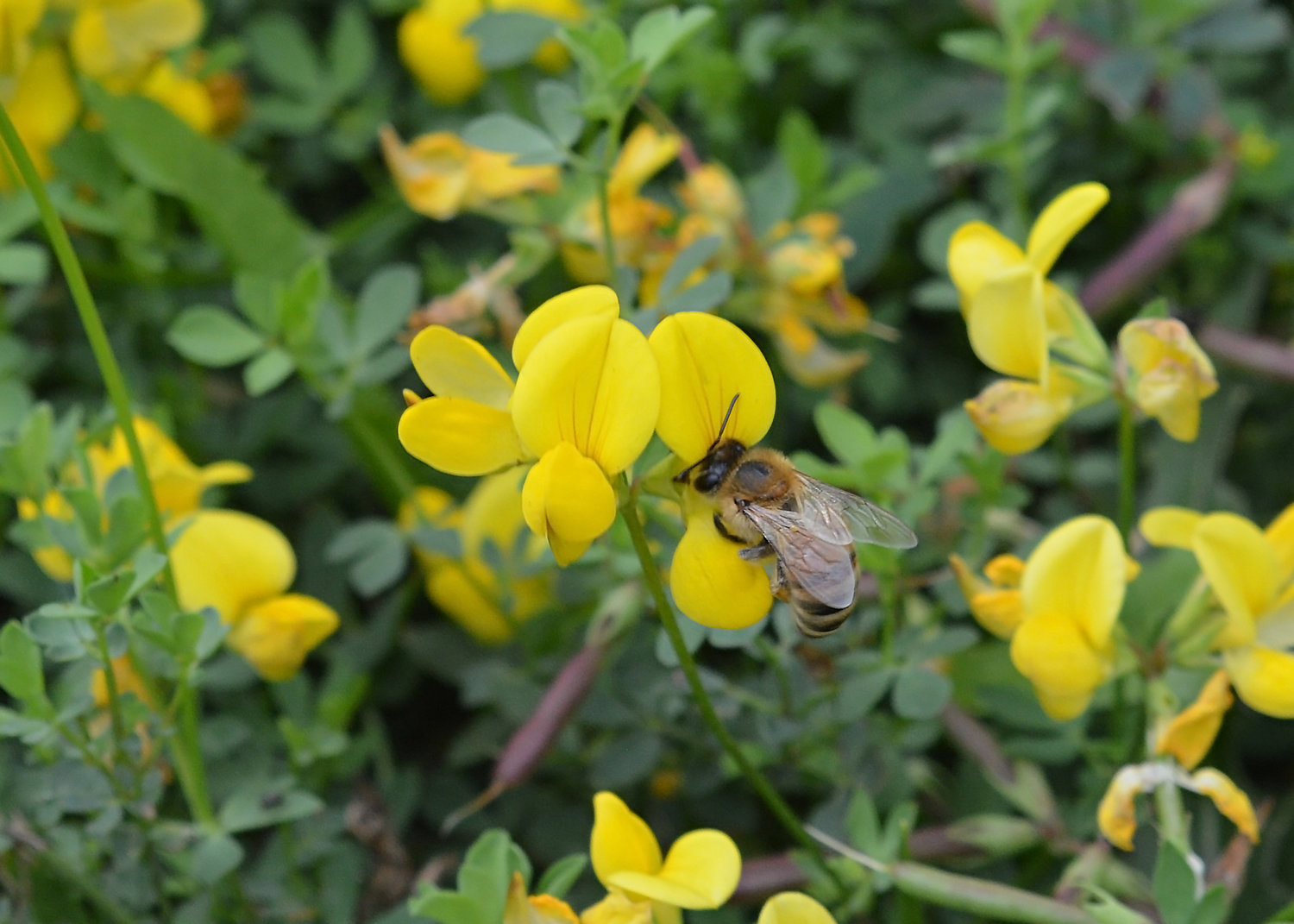
Birdsfoot trefoil
Lotus corniculatus
Perennial nitrogen-fixing legume with a branching taproot and bright yellow clustered flowers. Potentially long-lived in northern regions; cold hardy. Tolerant of marginal ground, including shallow soils with low fertility, low pH and poor drainage, as well as heaving soils unsuited to Alfalfa (Medicago sativa). Less forage yield than alfalfa in well-drained, fertile soils. Non-bloating and fine stemmed, excellent for hay, grazing pasture and wildlife habitat. Superior forage quality to alfalfa. Low seedling vigor; mix with non-aggressive perennial grasses to improve forage yield and prevent lodging. Intolerant of summer overgrazing. Avoid fall grazing to improve winter survival and spring growth. Readily reseeds itself. Grow to maturity every third year to allow seed-set and maintain the stand. Pollen and nectar used by honeybees and bumble bees.
- Growing Region: Pacific Northwest, Intermountain West
- Blooms: Spring, Summer
- Life Form: Forb
- Application Type: Cover Crop
- Height: 1-3 ft
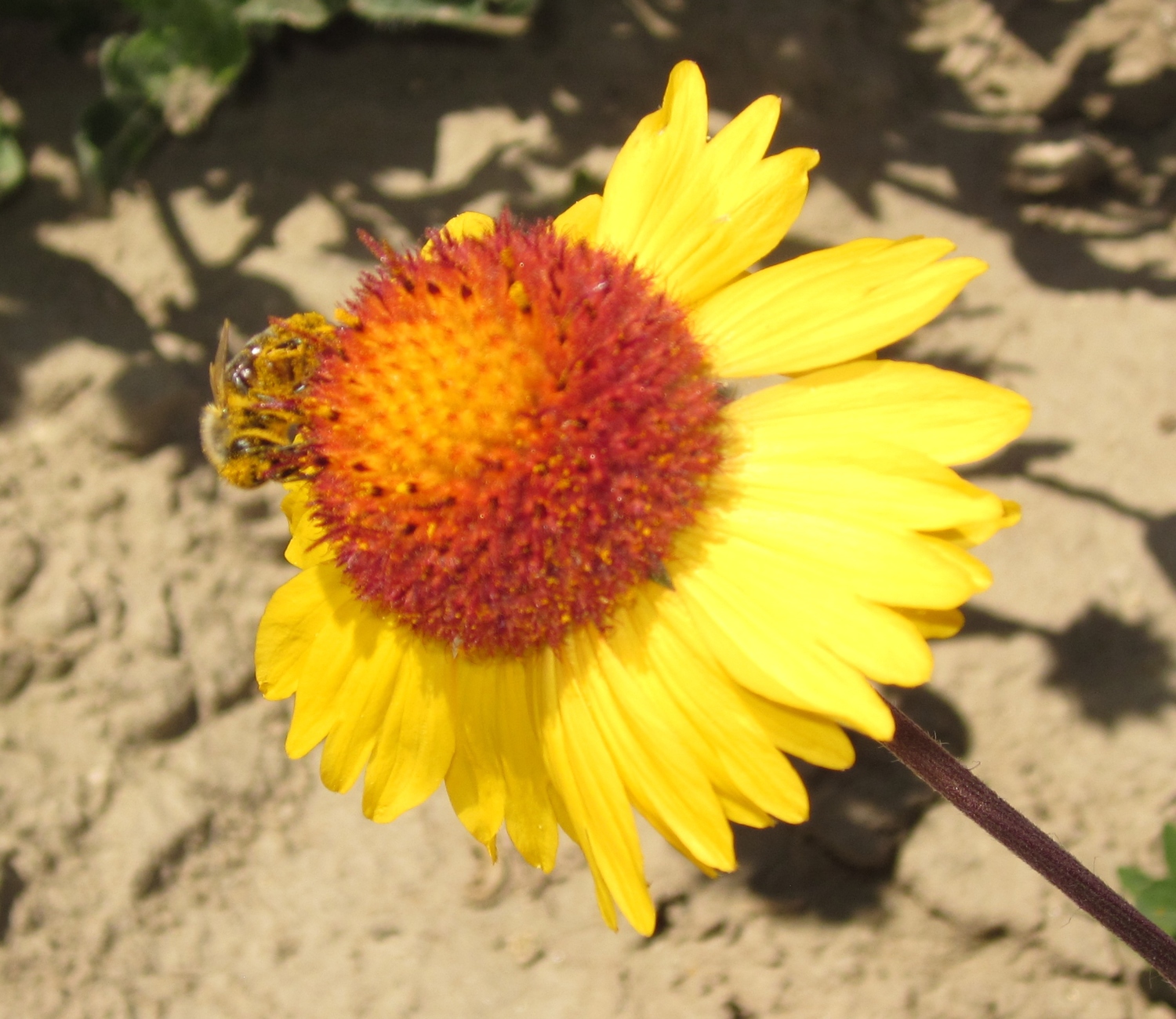
Blanket flower
Gaillardia aristata
Widely adapted, drought tolerant native perennial with yellow and red flowers, blooming April to September. Found in a variety of well-drained soils in grasslands, shrublands, open woodlands and mountain meadows; up to 10,000 ft. elevation. Tolerant of mild acidic to mild alkaline conditions. Establishes quickly and able to grow into large colonies, especially on disturbed sites. Fire resistant, increasing after wildfire. Competitive with weeds. Attracts numerous pollinating bees and butterflies; extensive bloom period. Foliage and associated insects are a food source for sage-grouse and sharp-tail grouse. Use in restoration, erosion control or beautification.
- Growing Region: Pacific Northwest, Southwest, Intermountain West, Midwest
- Blooms: Summer, Fall
- Life Form: Forb
- Application Type: Habitat Restoration, Land Reclamation
- Height: 1-2 ft
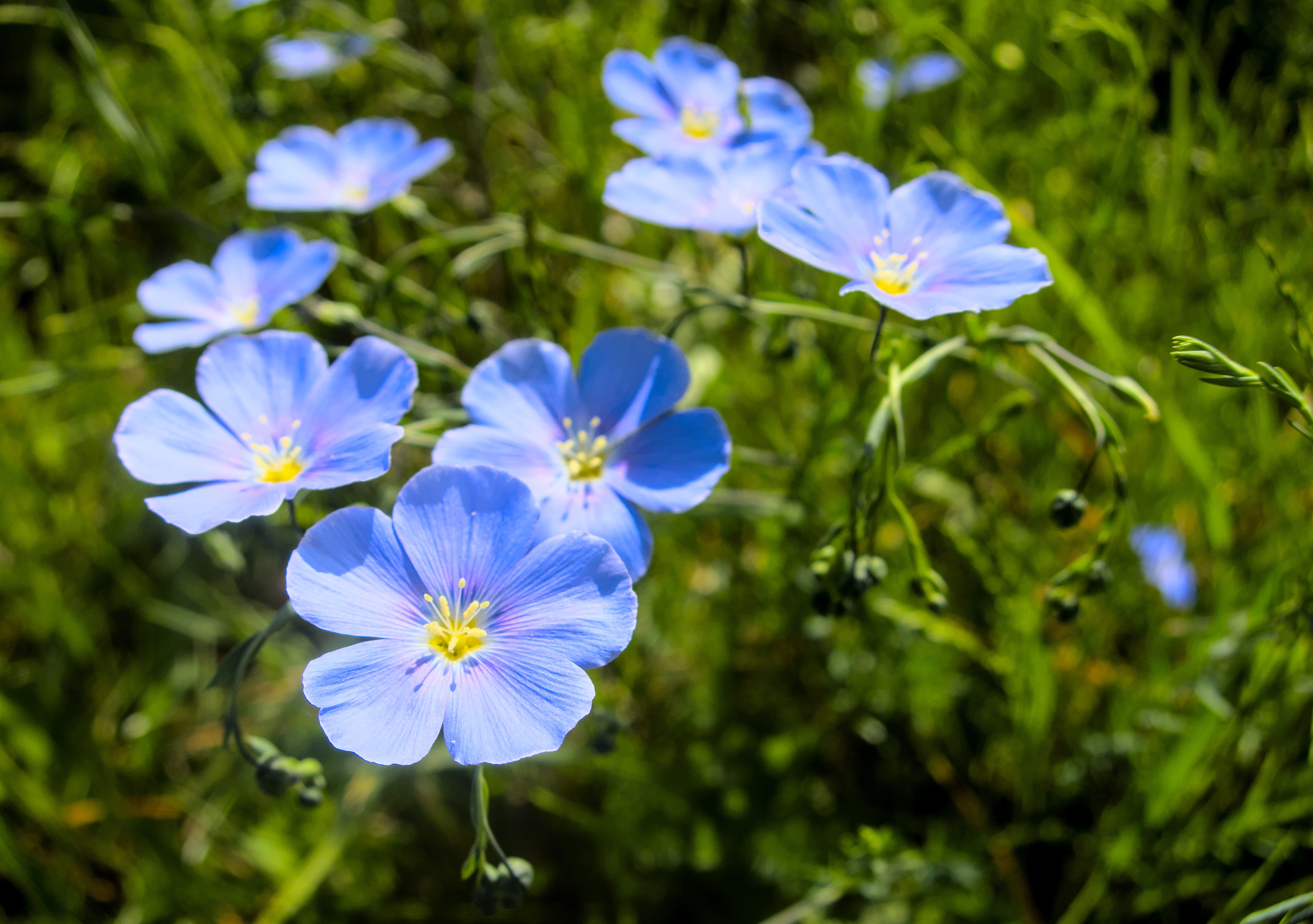
Blue Flax
Linum perenne
Short-lived drought tolerant semi-evergreen perennial with deep blue flowers that are replaced daily from April to August. Widely adapted and naturalized throughout much of the U.S. on well-drained, infertile and disturbed soils. Intolerant of poor drainage, flooded soils or high water tables. Good seedling vigor. Use for reclamation, highways and beautification in xeriscaping and around cabins. Also use in green strips and fuel breaks; semi-evergreen and fire resistant. Eaten by livestock and wild ungulates. Birds eat the seeds in fall and winter.
- Growing Region: Southeast, Midwest, California, Southwest, Intermountain West
- Blooms: Spring, Summer
- Life Form: Forb
- Application Type: Commercial Beautification, Land Reclamation
- Height: 1-2 ft
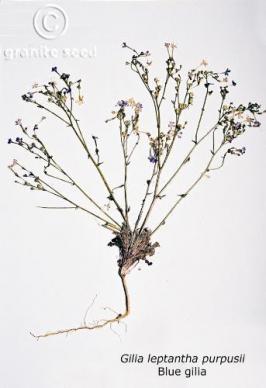
Blue gilia
Gilia purpusii
Low to moderate water requirement; full sun to partial shade. Annual with deep blue flowers; blooms April to July. Recommended throughout the West for mass plantings and wildflower mixes.
- Growing Region: California, Intermountain West
- Blooms: Spring
- Life Form: Forb
- Application Type: Habitat Restoration, Land Reclamation
- Height: 1-2 ft